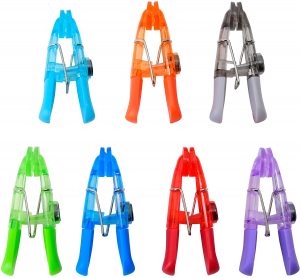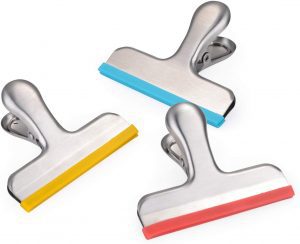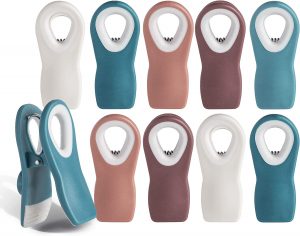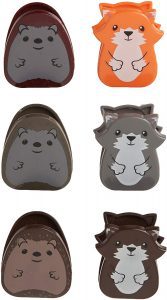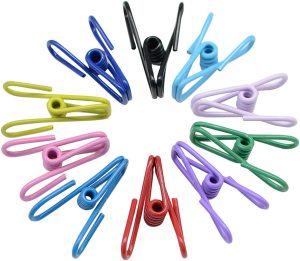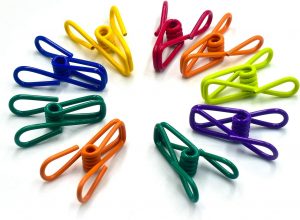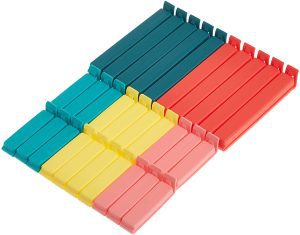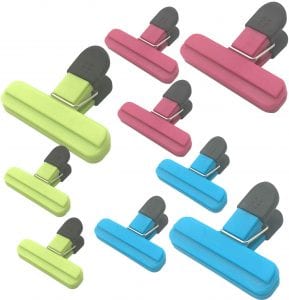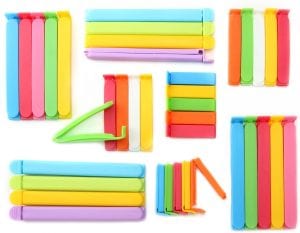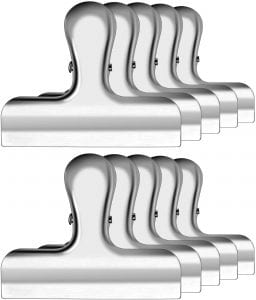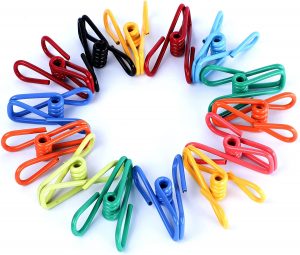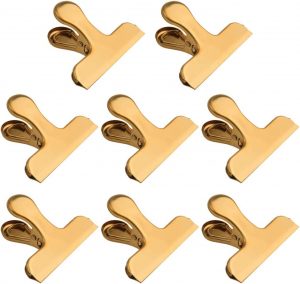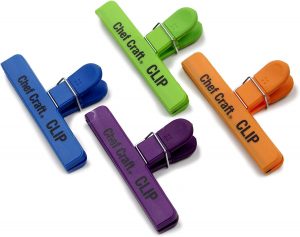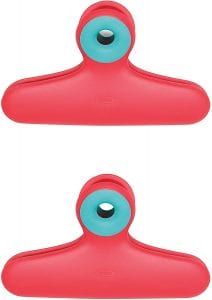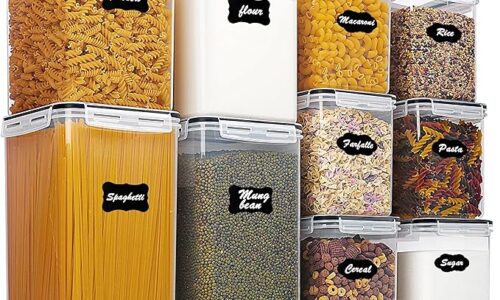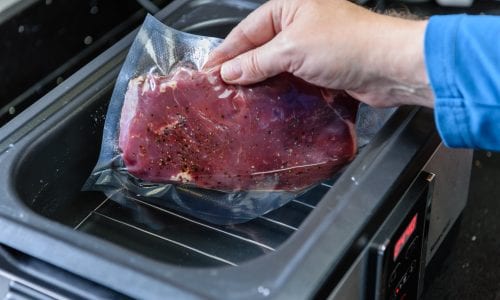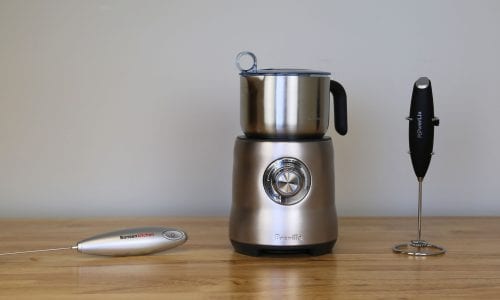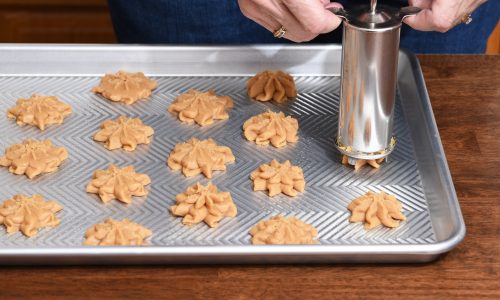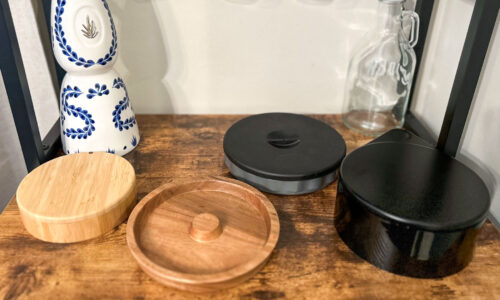The Best Bag Clips
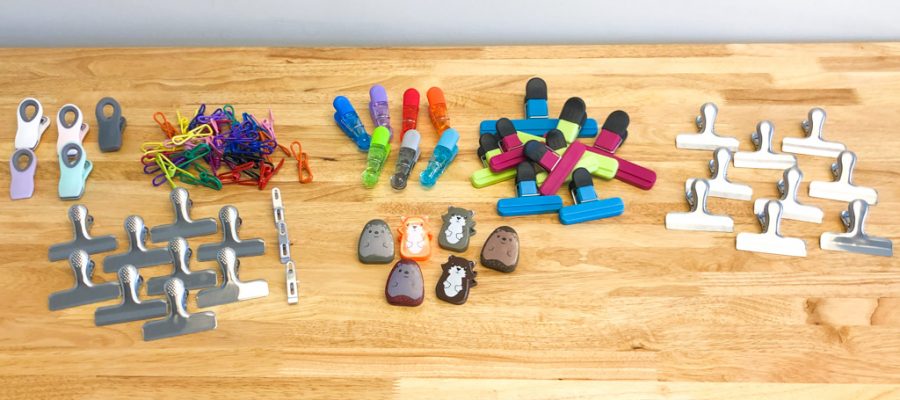
Our Review Process
Don't Waste Your Money is focused on helping you make the best purchasing decision. Our team of experts spends hundreds of hours analyzing, testing, and researching products so you don't have to. Learn more.
Our Picks For The Top Bag Clips
- 1. Kizmos Magnetic Snack Bag Clips, 7-Pack
- 2. House Again Stainless Steel Rust-Proof Bag Clips, 12-Pack
- 3. COOK WITH COLOR Non-Slip Rubber Lined Chip Clips, 10-Piece
- 4. Kikkerland Forest Creature Cute Bag Clips, 6-Pack
- 5. Yansanido Multi-Purpose Food Bag Clips, 30-Pack
- 6. GripStic Airtight Zippered Bag Clips, 12-Pack
- 7. Mr. Pen Long-Lasting Organizing Bag Clips, 6-Pack
- 8. DAGONGREN Vinyl Coated Wire Chip Bag Clips, 16-Pack
- 9. Ikea Bevara Dishwasher Safe Bag Clips, 30-Pack
- 10. UNIYO Non-Slip Grip Bag Clips, 9-Pack
- 11. ANPHSIN Eco-Friendly Kitchen Bag Clips, 38-Pack
- 12. IPOW Family Round Corner Bag Clips, 10-Pack
- 13. Riveda Moisture-Proof Strong Grip Bag Clips, 30-Pack
- 14. PreuveDe Waterproof Stainless Steel Chip Clips, 8-Piece
- 15. Chef Craft Wide Plastic Craft Chip Clips, 4-Piece
- 16. OXO 13141600 Good Grips Wide Bulk-Sized Bag Clips, 2-Pack
You'll get seven colorful bag clips with your purchase. The clips can be used to keep your potato chips and pretzels nice and fresh after opening, as well as hold the page to your recipe book open and display important reminders on your refrigerator. They even work well to display photos across a decorative string on your wall.
Magnetic BackThanks to the magnetic back, this set of bag clips can also be used to hang recipes and important notes on the refrigerator.
Each of the 12 bag clips in this set is made using a rust-resistant stainless steel. That gives the clips added strength to hold both small and large bags closed. At the tip of the clips is a silicone edge, which adds to grip, eliminating the chance that the clips will slide off a slippery bag.
Solid ConstructionThis bag clip is extremely versatile and can be used to hold food bags closed, keep paper attached to a clipboard and hang pictures from a string.
Choose from a variety of different colors, from soft pastels to bold and neutral hues. Each set includes five 3-inch food clips, each with a magnet for keeping it on the fridge when not in use. The nylon handles are durable while also being soft to the touch, making them easy to maneuver onto the bag.
Classic EleganceThe simple, classy design of these chip clips makes it a great addition to any space.
Are you looking for a way to get your kids to keep their snacks nice and fresh in between servings? This set of six bag clips is your answer. They not only come in four fun colors, but they also feature adorable woodland creatures that are sure to attract your kids.
Cute Animal DesignHouseholds with young children will fall in love with these bag clips, which come in the shape of your favorite woodland creatures.
Buying Guide
In order to avoid wasting food, you need to make sure the food stays fresh. When it comes to bagged foods, it isn’t practical to transfer remaining servings to a plastic storage container every time you open a bag. To keep this type of food from spoiling, you’ll want to invest in a quality bag clip set.
Look for a bag clip set that is durable, so you don’t have to replace the set prematurely. For example, a clip that is made out of stainless steel won’t rust, but will stay tough for years. Stainless steel models also resist odors and stains. This is an attractive feature, especially since you’ll be using the clips to store food.
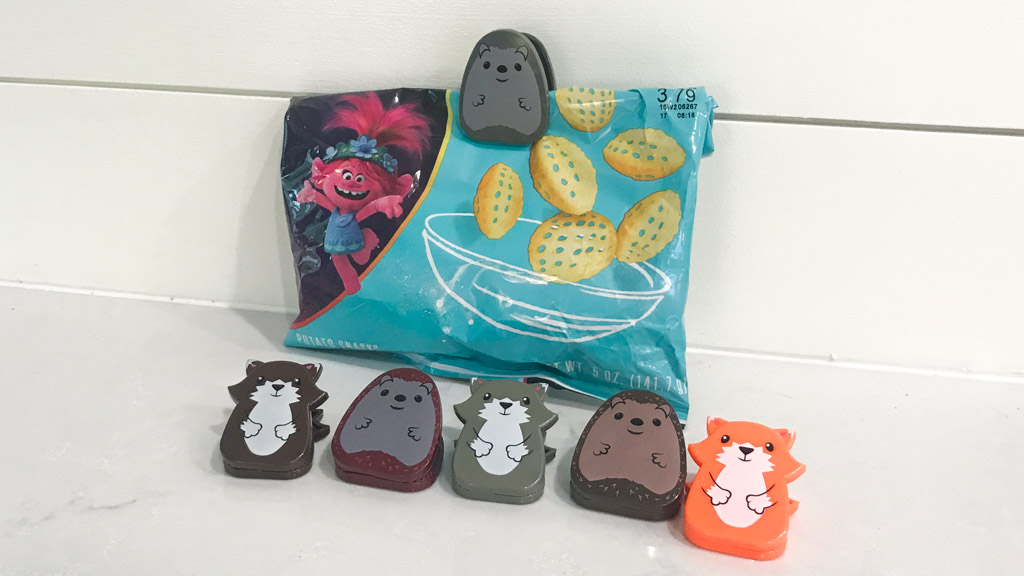
Next, consider the size of the bags you typically buy. Just like your snack bags, bag clips come in a variety of sizes. You can purchase a set of large clips, as well as a set of small clips. Some sets actually comes with both sizes. For example, one company sells sets made up of nine bag clips with three large clips that measure 6 inches by 3.5 inches and six small clips that measure 3 inches by 2.5 inches.
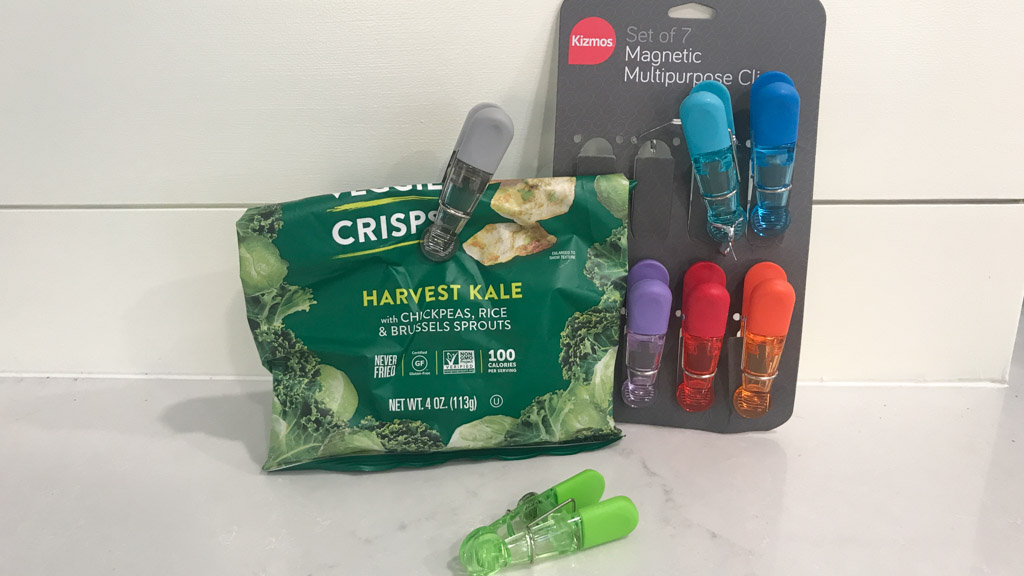
Review the design of the bag clip to determine if it has any extra features that make it more desirable. Does it come with rubber non-slip grips or a solid airtight seal? Look for clips that are equipped with magnets in the back, which allows them to be stored on the refrigerator. Consumers can even hang important reminders, recipe cards or children’s coloring pages from the clips.
MORE: The Best Cereal Container
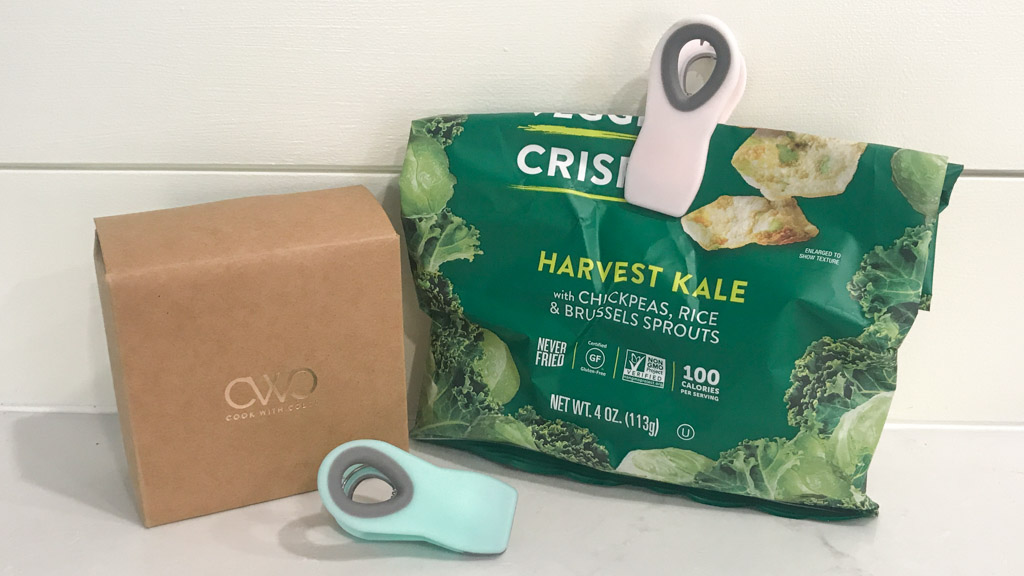
If you have small children at home, you’ll want to buy a bag clip set that is attractive to kids. That way, they will be more likely to use the clip after getting their own snack. The Kikkerland Woodlands Bag Clip is an excellent choice, as it comes in several fun colors and is decorated with cute woodland creatures.
What to Look For
- If any food or drink spill onto your bag clips, you can quickly clean them with a rag dipped in a little dish soap and water.
- You can use a permanent marker to label each clip if you plan on using them for a variety of foods. For example, you may wish to keep one clip solely for securing a bag of nuts, so you could write “nuts” across the center of the clip. This is especially helpful if anyone in the home is allergic to nuts.
MORE: The Best Food Storage Container
- Bag clips are a great way to secure goody bags for children’s birthday or school holiday parties. You could add a set of googly eyes to turn the gift bag into a creature or glue a heart to the top of the clip when celebrating Valentine’s Day.
- You don’t have to reserve your bag clips for use with food only. They also come in handy for a variety of other tasks. You can use them to hold a set of napkins during a picnic to keep them from blowing away, attach them to the top of a stack of papers to keep them organized or clip them to a certain page in your recipe book to keep it open while you follow the directions.
- Before you decide which set of bag clips has the best value, you need to figure out the cost per clip. To arrive at this number, you simply need to divide the total cost of the set by the number of clips in the set. When you do this, you’ll discover that the Kikkerland Woodlands Bag Clip is one of the more affordable brands. At the top of the price range are sets that have a more unique design.
More to Explore
The first person credited with inventing the bag clip is Jim Shaw. As with most inventions, Shaw saw a problem and came up with a solution. In this case, the problem was keeping potato chips fresh after opening the bag and removing a serving size. The solution was a wide clip that could seal the open end of the bag closed. He then presented his solution to the Frito Lay company in 1980. Shaw neglected to obtain a patent for his clip, however, so two years later another inventor, George Welch, was able to create a clip and have it patented.

